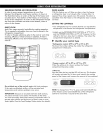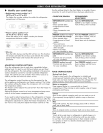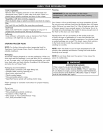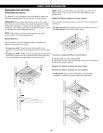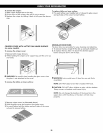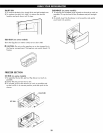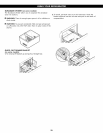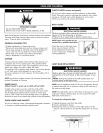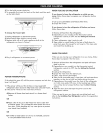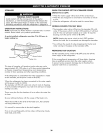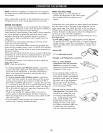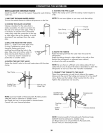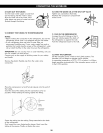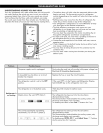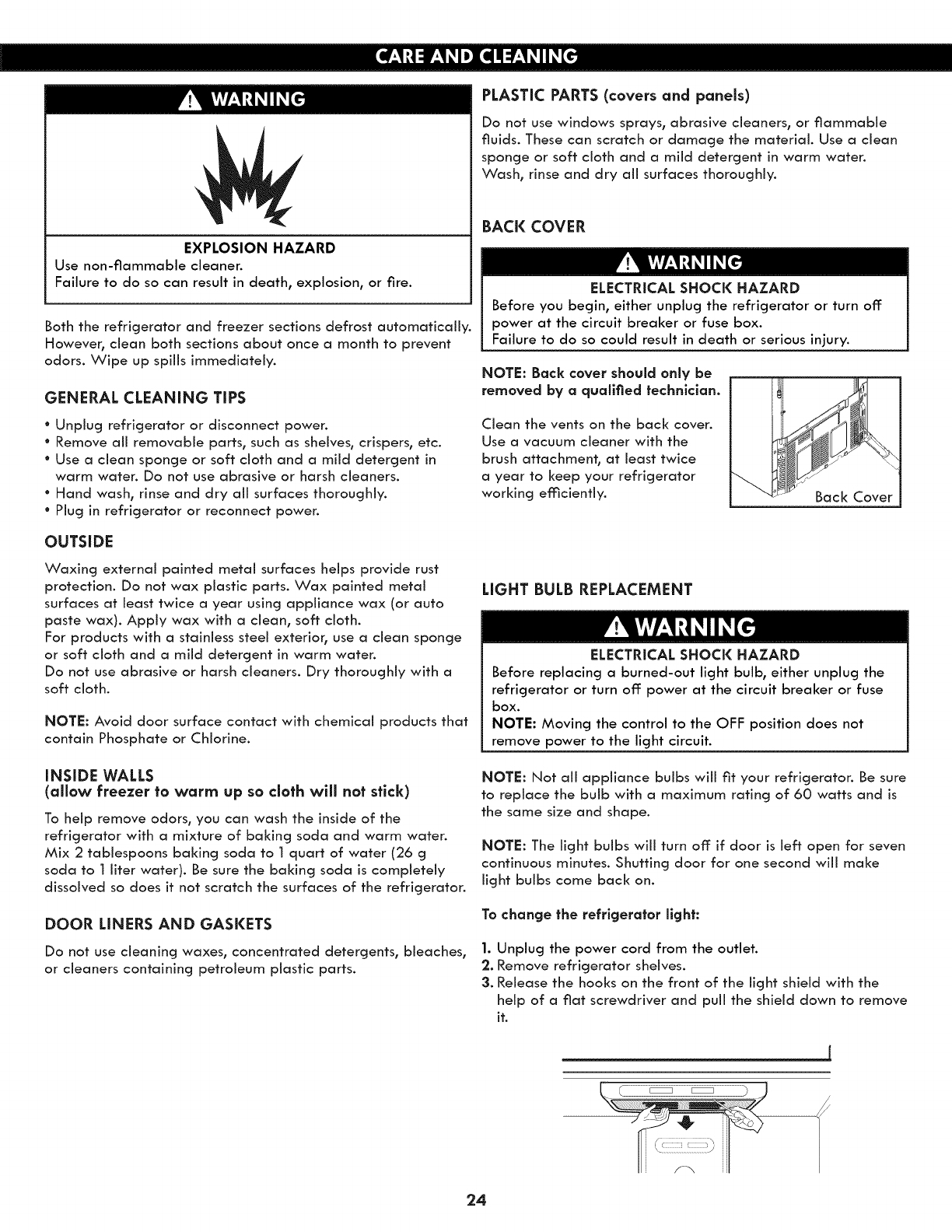
EXPLOSION HAZARD
Use non-flammable cleaner.
Failure to do so can result in death, explosion, or fire.
Both the refrigerator and freezer sections defrost automatically.
However, clean both sections about once a month to prevent
odors. Wipe up spills immediately.
GENERAL CLEANING TIPS
° Unplug refrigerator or disconnect power.
• Remove aii removable parts, such as shelves, crispers, etc.
° Use a clean sponge or soft cloth and a mild detergent in
warm water. Do not use abrasive or harsh cleaners.
° Hand wash, rinse and dry all surfaces thoroughly.
° Plug in refrigerator or reconnect power.
OUTSIDE
Waxing external painted metal surfaces helps provide rust
protection. Do not wax plastic parts. Wax painted metal
surfaces at least twice a year using appliance wax (or auto
paste wax). Apply wax with a clean, soft cloth.
For products with a stainless steel exterior, use a clean sponge
or soft cloth and a mild detergent in warm water.
Do not use abrasive or harsh cleaners. Dry thoroughly with a
soft cloth.
NOTE: Avoid door surface contact with chemical products that
contain Phosphate or Chlorine.
INSIDE WALLS
(allow freezer to warm up so cloth will nat stick)
To help remove odors, you can wash the inside of the
refrigerator with a mixture of baking soda and warm water.
Mix 2 tablespoons baking soda to 1 quart of water (26 g
soda to 1 liter water). Be sure the baking soda is completely
dissolved so does it not scratch the surfaces of the refrigerator.
DOOR LINERS AND GASKETS
Do not use cleaning waxes, concentrated detergents, bleaches,
or cleaners containing petroleum plastic parts.
PLASTIC PARTS (covers and panels)
Do not use windows sprays, abrasive cleaners, or flammable
fluids. These can scratch or damage the material. Use a clean
sponge or soft cloth and a mild detergent in warm water.
Wash, rinse and dry aii surfaces thoroughly.
BACK COVER
ELECTRICAL SHOCK HAZARD
Before you begin, either unplug the refrigerator or turn off:
power at the circuit breaker or fuse box.
Failure to do so could result in death or serious injury.
NOTE: Back cover should only be
removed by a quaEfied technician.
Clean the vents on the back cover.
Use a vacuum cleaner with the
brush attachment, at least twice
a year to keep your refrigerator
working emcientiy.
LIGHT BULB REPLACEMENT
ELECTRICAL SHOCK HAZARD
Before replacing a burned-out light bulb, either unplug the
refrigerator or turn off: power at the circuit breaker or fuse
box.
NOTE: Moving the control to the OFF position does not
remove power to the light circuit.
NOTE: Not oil appliance bulbs wiii fit your refrigerator. Be sure
to replace the bulb with a maximum rating of 60 watts and is
the same size and shape.
NOTE: The light bulbs wiii turn off: if door is left open for seven
continuous minutes. Shutting door for one second will make
light bulbs come back on.
To change the refrigerator light:
1. Unplug the power cord from the outlet.
2. Remove refrigerator shelves.
3. Release the hooks on the front of the light shield with the
help of a flat screwdriver and pull the shield down to remove
it.
24



